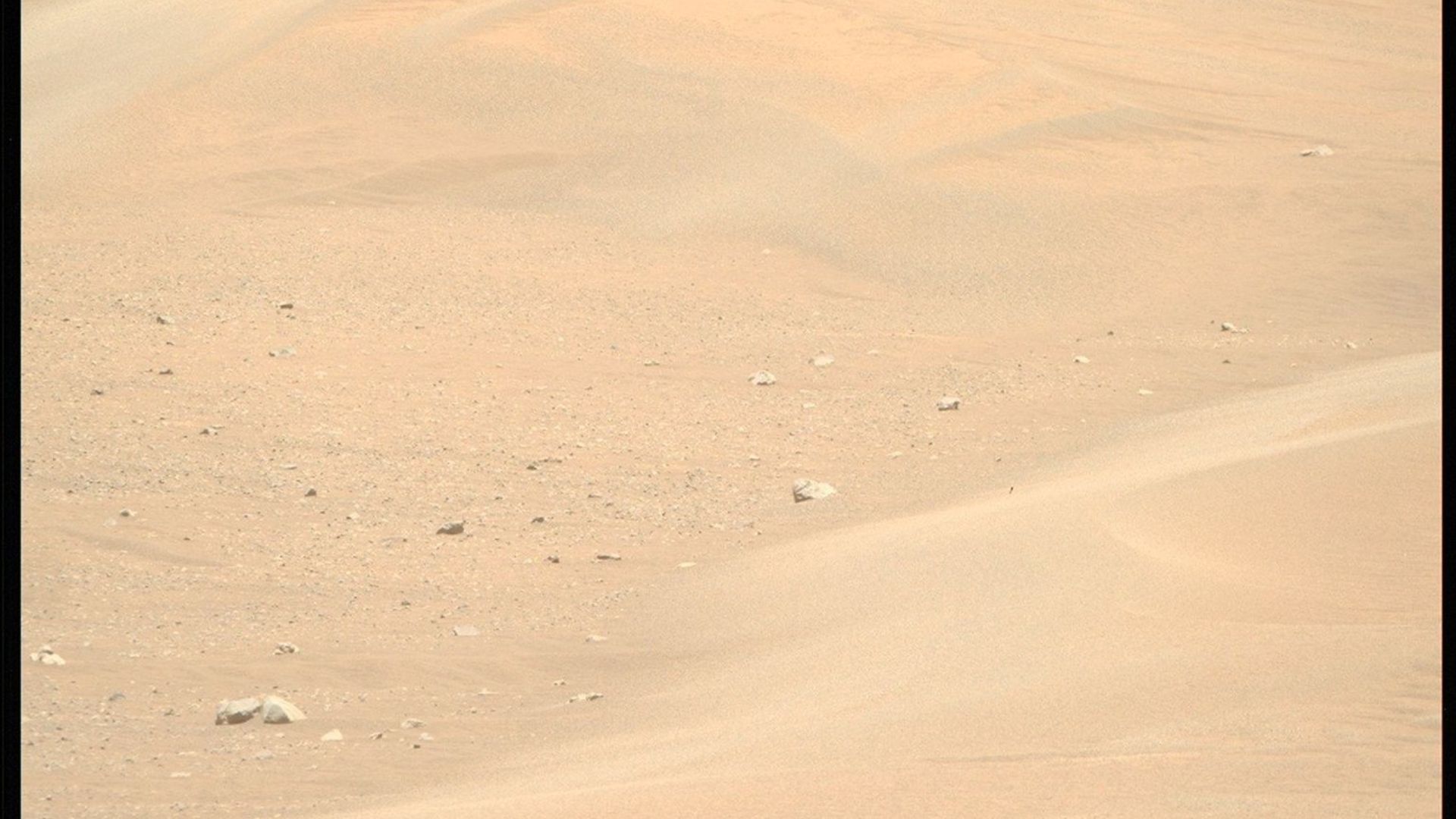🕰️ These sand waves on Mars move at an unimaginable pace
Follow us on Google News (click on ☆)
These sandy ridges, called megaripples, measure up to one meter (3.3 feet) in height. They lie between small ripples and large Martian dunes. Their formation dates back to a time when Mars' atmosphere was denser. The powerful winds of that period sculpted these landscapes. Today, many appear frozen in time.

Inactive megaripples photographed by Perseverance on Mars on August 13, 2025.
Credit: NASA/JPL-Caltech/ASU
The Kerrlaguna site shows megaripples considered inactive. They have not moved visibly in recent years. Their structure combines fine sand under a layer of coarser grains. This composition makes them resistant to wind erosion. However, some satellite observations reveal very slow movements.
Previous studies indicate a displacement of about one meter (3.3 feet) every nine years. This slow movement proves that the Martian surface is not completely immobile. The polar regions show the most dynamic examples. Carbon dioxide ice influences these seasonal processes.
Perseverance uses its instruments to analyze the composition of the sands. Cameras and chemical tools examine grain size and sedimentary layers. The detected salt crusts could reveal past interactions with water. These data are crucial for future human missions.
The rover recently changed course after difficulties on rocky terrain. This detour allowed the study of interesting rocks like 'Horneflya', complementing knowledge about surface dynamics. The mission will then continue towards other megaripple fields.

Animation showing the evolution of wind patterns on Martian dunes.
Credit: NASA/JPL-Caltech/UArizona
This research helps understand Mars' climatic evolution over millions of years. Megaripples serve as natural archives of past atmospheric conditions: their study sheds light on long-term environmental changes. Every grain of sand contains a part of this history.
How do winds shape Martian landscapes?
Winds on Mars, although less powerful than in the past, continue to shape the surface. They transport sand and dust particles over long distances. This aeolian process creates distinctive patterns like dunes and megaripples.
The low density of the Martian atmosphere influences how wind interacts with the ground; grains move by saltation, a characteristic bouncing motion. This erosive action is slower than on Earth but persistent over geological timescales.
Studying these mechanisms helps reconstruct the planet's climatic history. It also allows predicting the future evolution of extraterrestrial environments.
Why are megaripples so resistant to erosion?
The structure of Martian megaripples combines layers of sand with different grain sizes. A surface layer of coarse grains protects the fine sand below in a natural framework that reduces sensitivity to prevailing winds.
On Earth, sand ripples are often mobile because they are homogeneous. On Mars, the separation of grain sizes stabilizes the formations. This phenomenon is amplified by low gravity and the thin atmosphere. However, some megaripples show signs of fracturing after long periods.
This resistance makes them valuable indicators for planetary geologists. Their preservation allows dating major climatic events on Mars.